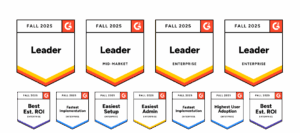The Antidote For Challenges in Healthcare Accounting
Blog post
Share
In terms of patient treatment, the healthcare industry is constantly and rapidly evolving as technology improves in many areas. However, when it comes to healthcare organizations’ office of finance, the same cannot be said for their technological improvement. In many ways, the finance and revenue departments directly affect the quality of care patients are able to receive from an organization, so it’s crucial that the solution used to complete the Record to Report process is up-to-date and effective.
Here are some of the challenges that accountants in the healthcare space face daily, and what the automated “antidote” to these problems looks like.
Challenge #1: Complicated Financial Framework
To keep everything running smoothly, healthcare accounting teams must be diligent in how they track and resolve payments from patients and their insurance providers. Unlike a traditional retail payment process, the receiver of a health service is usually not the only payer. This adds a unique layer of complexity to the transaction matching process.
When a payment is received from either party, the financial matching process is facilitated with data coming from disconnected systems, often from several different vendors. These systems are not singularly designed to effectively handle the entire Record to Report process from start to finish. In general, patient care organizations have many outdated technology platforms, such as spreadsheets, that lack integration between systems, create duplicate work and lack controls for this heavily-regulated industry.
To improve the current environment, payment processing and other related functions must be centralized through a system specifically created to manage your financial close, as well as integrate with your current patient systems or ERP. A centralized repository of information ensures that all information such as patient information, payments and outstanding balances, is tracked in a single place. For healthcare accounting teams, the alternative is manual processes managed through mountains of documents and binders stuffed with information— increasing the risk that information, and revenue, is lost.
Challenge #2: Outdated Accounting Technology
Like many other organizations, the technology that healthcare accounting teams utilize for their financial processes tend to be outdated tools, such as spreadsheets. Spreadsheets, and the manual processes they require, inherently lack many necessities. Finance and accounting teams using spreadsheets don’t have a line of sight into the entire Record to Report process, and can’t reliably track the completion of tasks or entire processes. Setting up proper controls and procedures to both standardize financial processes and protect sensitive information— such as Protected Health Information (PHI)— are extremely limited within spreadsheets.
Outdated technology also makes the financial processes that accounting teams must perform, such as journal entries, long and tedious. For accountants to enter adjustments into the system, the process is bulky and cumbersome. This is a waste of time and the use of higher-level skills that accountants have. Moreover, healthcare accounting teams still maintain the requirement to close in a certain amount of days and obsolete technology endangers those deadlines.
Additionally, offices of finance using spreadsheets are at higher risk for compliance violations. According to Forbes, up to 90% of all spreadsheets contain data errors. These errors can be attributed to simple, human mistakes through transferring information and copy-and-pasting, among other methods. However, these seemingly miniscule mistakes can snowball in a way that endangers the future of organizations, especially in healthcare.
Challenge #3: Frequent Mergers and Acquisitions (M&A)
The frequency of mergers and acquisitions in the healthcare industry is rising, leading to more facilities existing as part of a larger system facilitated by a central office. New facilities bring more systems of record that the central office must either integrate with or replace. Consequently, existing systems are forced to deal with exponentially more patients than before, as well as all their accompanying data and private information. While stored and managed in manually maintained spreadsheets and disconnected databases, this data is not secure or easily matched.
The Antidote: An Automated Solution
Many of healthcare accounting teams’ challenges center around the primary tool they tend to use for their Record to Report process: spreadsheets and disparate systems of record. As medical research improves, patients will have access to more healthcare services. Facilities that cannot keep up with the growth and modernize their methods may see a reduction in their patient intake due to data breaches and exposure.
Transitioning from a spreadsheet system to a cloud-based solution with data encryption capabilities keeps data easily accessible as well as secure. Adhering to HIPAA regulations requires high levels of data encryption throughout an automated solution. Healthcare accounting solutions managed in the cloud are more easily monitored, updated and expanded as the healthcare system grows.
Additionally, implementing an automated solution that meets the specific needs of the healthcare industry and directly connects to your current patient systems’ and ERP data creates a single, dependable view of your organization’s financials across all entities and departments while keeping payments and supporting documentation protected. If the facility scales up, the visibility you gain with an automated solution is more than useful. Additionally, your organization can experience up to a 99% reduction in the time required to support your external auditors as they review your financials and supporting documentation.
Healthcare itself is an ever-evolving field merging people, innovation and technology, and that shouldn’t change when it comes to their office of finance. The impact of improving the solutions that support the financial close process and the healthcare accounting team will extend to benefit the entire healthcare system. Automating your organization’s Record to Report process is simply the best way to cure healthcare’s often disconnected and loosely controlled accounting processes.
Learn more about how to improve the office of finance in healthcare by downloading our eBook.
Written by: Ashton Mathai


